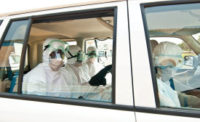About 95% of companies sent employees on business trips to high risk locations last year, says a report on the subject.
More than 600 global companies were surveyed by International SOS over the past year for the report. Lawlessness, terrorism, political upheaval, civil unrest and pandemics were identified as among the top 20 risks faced by employees abroad.
Other findings include:
Most Dangerous Locations -- Respondents were asked to a) identify the nations in which they have employees working, or where employees are regularly sent on assignment and b) to rank those nations in order according to the level of danger that organization believes is posed to employees, in terms of health, safety and security. The study found that the top 20 perceived high-risk employee locations include key high-growth and emerging markets.
Mexico was rated as the highest risk location, with all BRIC countries within the top 20: India (5), China (8), Russia (14) and Brazil (16). Across these markets, lawlessness, terrorism, political upheaval, civil unrest and pandemic illness were identified as among the top-20 risks faced by employees abroad. The top 10 nations perceived as most dangerous, by organizations that have employees operating in them, were as follows: 1) Mexico, 2) Nigeria, 3) Afghanistan, 4) India, 5) Pakistan, 6) Iraq, 7) Papua New Guinea, 8) China, 9) Democratic Republic of Congo and 10) Indonesia.
Additionally, 95 percent of responding organizations stated they dispatch international business travelers to regions they believe to be high risk; 74 percent said they have employees who are based in high-risk locations and 70 percent are on international assignment.
Most Commonly Occurring Incidents -- Respondents were asked to identify the difficulties experienced by traveling and remotely located employees. The five most commonly occurring serious health- and safety-related concerns were lack of access to medical care, opportunistic crime, workplace accidents, road accidents and civil unrest.
Seventy-five percent of responding organizations stated they had employees who experienced a health or medical emergency while travelling; 55 percent said affected employees had "lack of access to appropriate health care" at the time of need.
Sector-Specific Concerns -- The study also assessed participant responses by the sector they represent. While there were many commonalities across sectors there were also some interesting discrepancies in the types of issues that are most vexing for certain industries. Among the highlights: the agriculture and agribusiness sector has pronounced concerns around civil and political unrest. The construction and real estate sector are most focused on risks associated with lawlessness, violent crime, and organized crime. The energy and natural resource sector has elevated concerns about remoteness of work locations, language and cultural estrangement, and road accidents.
Ownership of Duty of Care Responsibility - Finally, the study sheds light on a lack of consensus on who "owns," or should own, duty of care, and on where it should reside in an organization, with respondents most often citing human resource (HR), security/risk and corporate travel managers -- albeit with little clarity on which discipline is most suited to manage the task.
The study is available here: www.internationalsos.com






